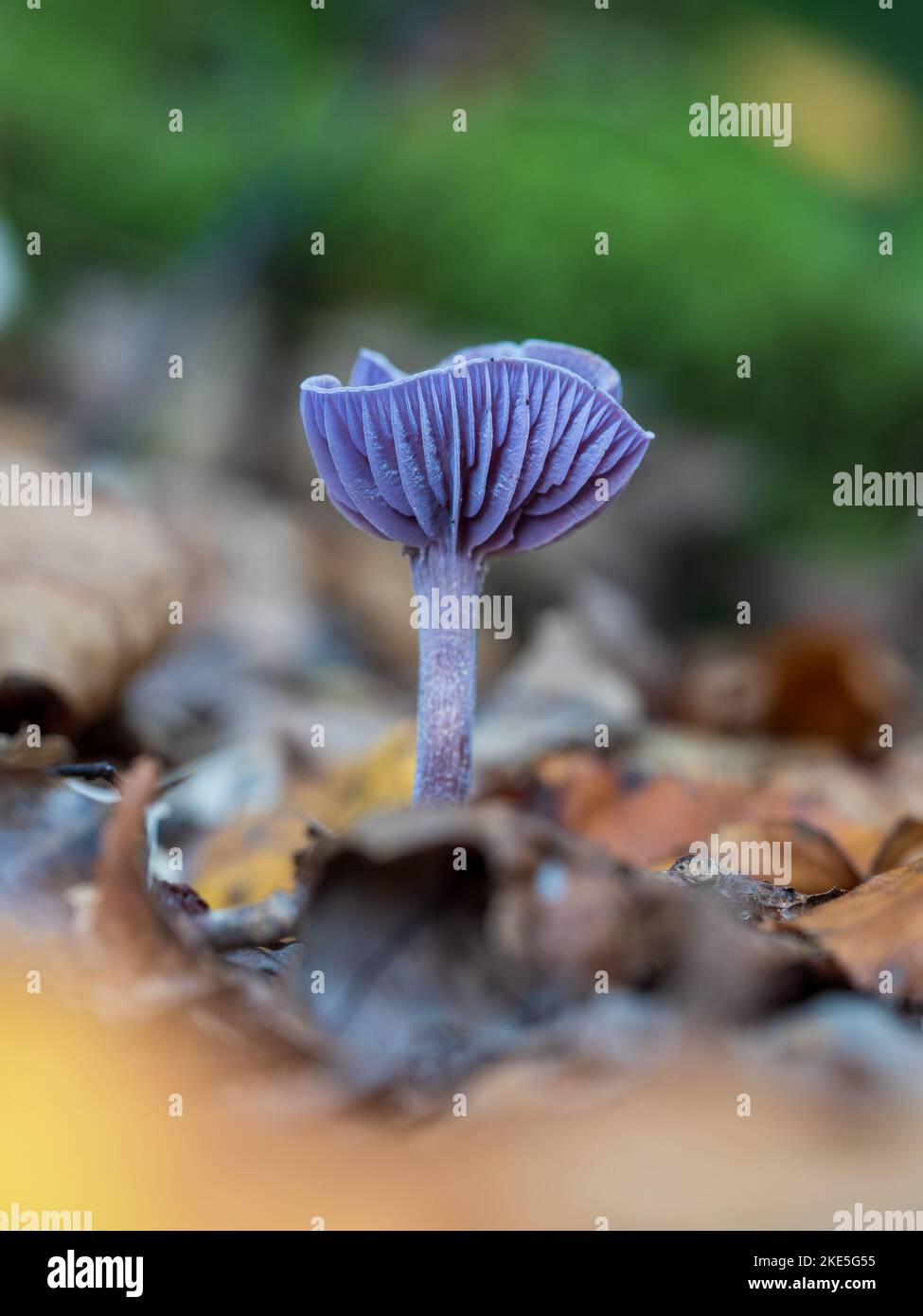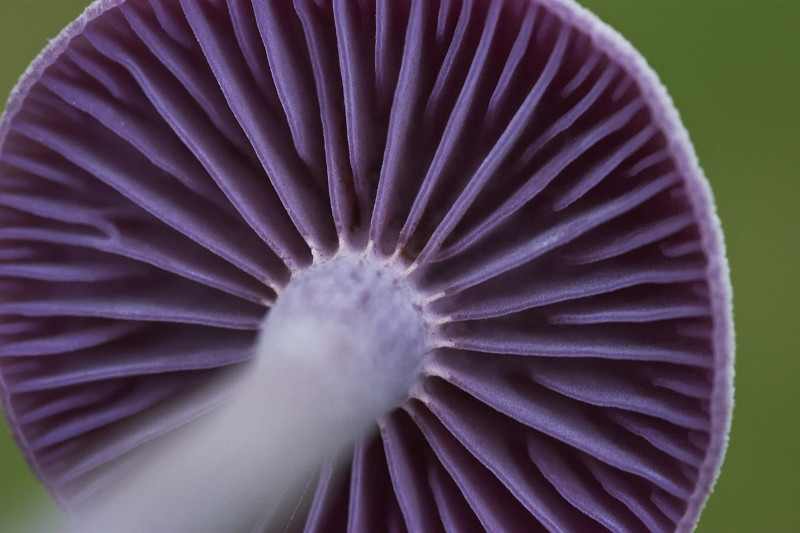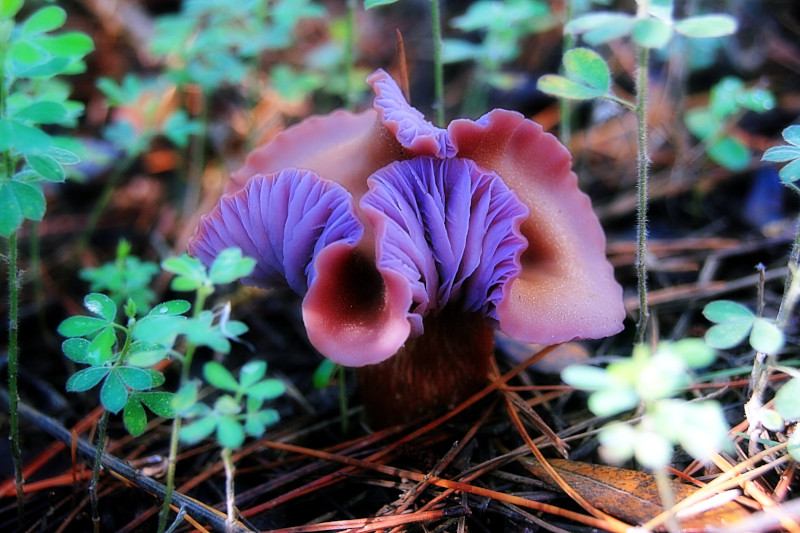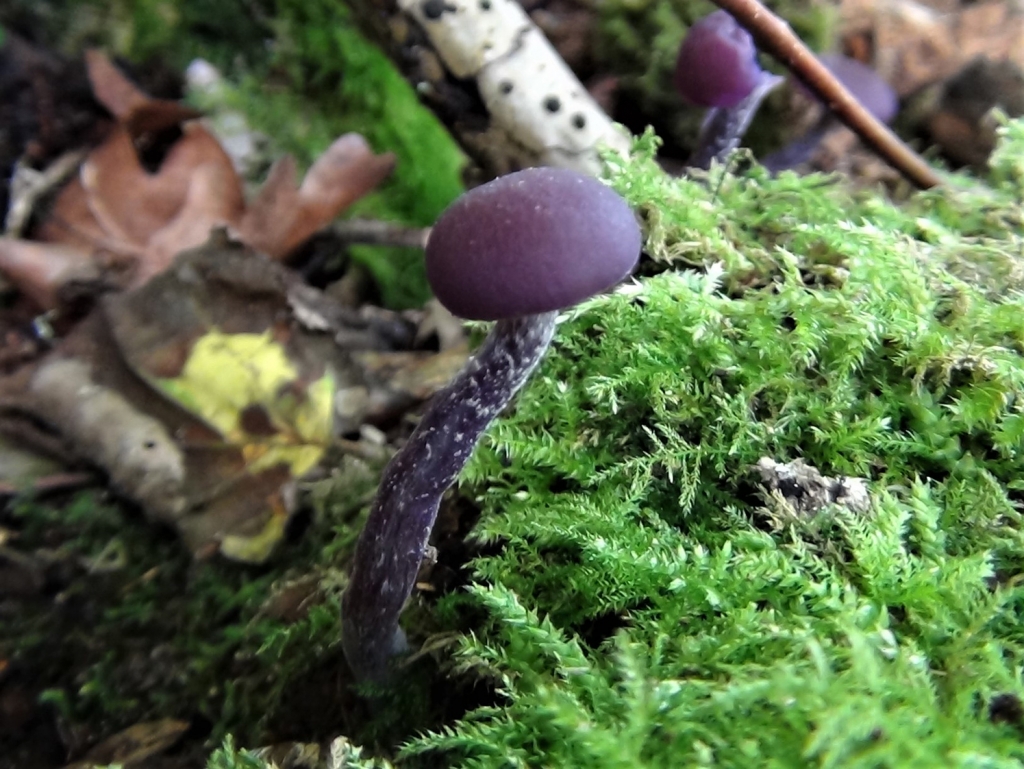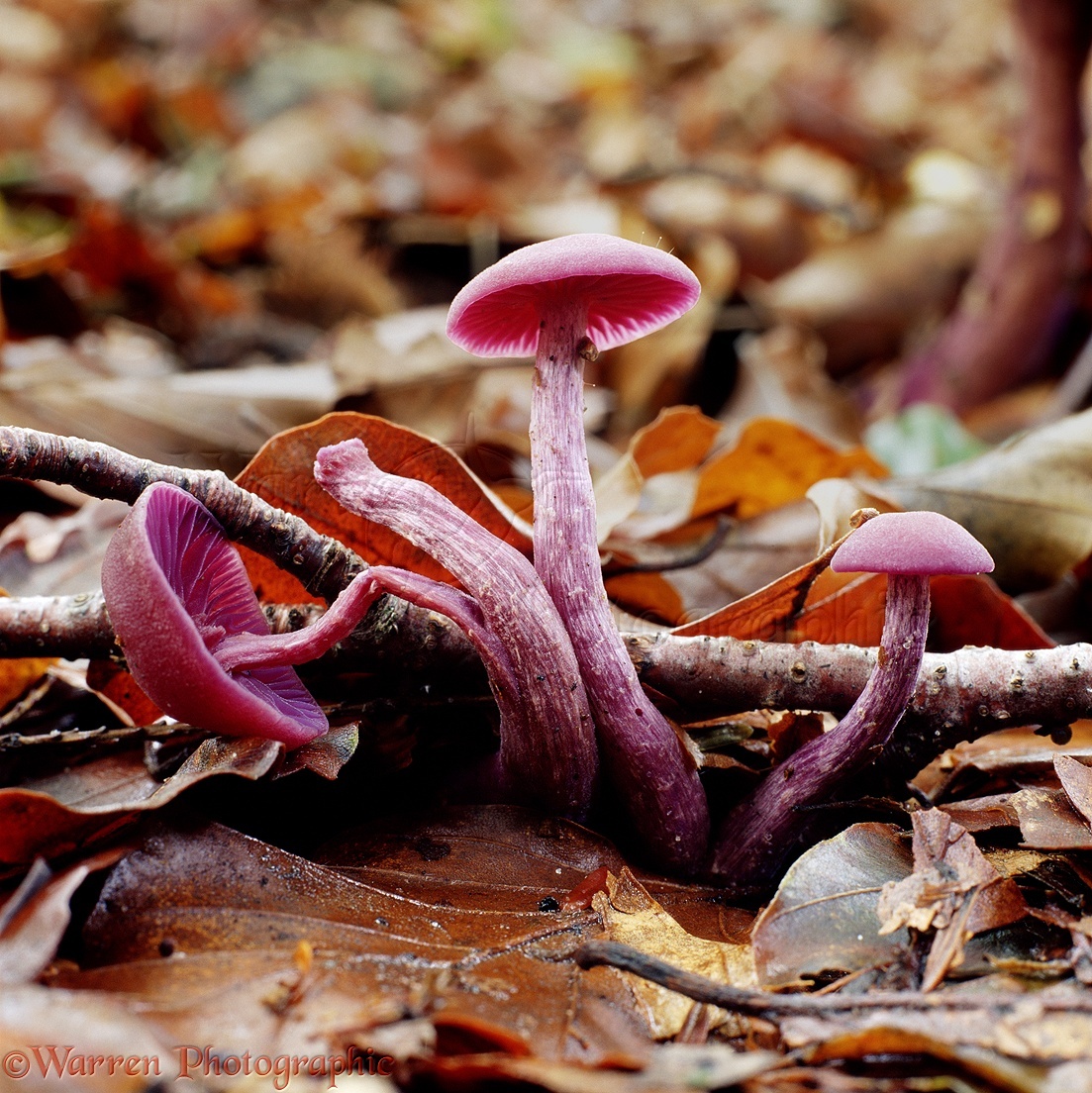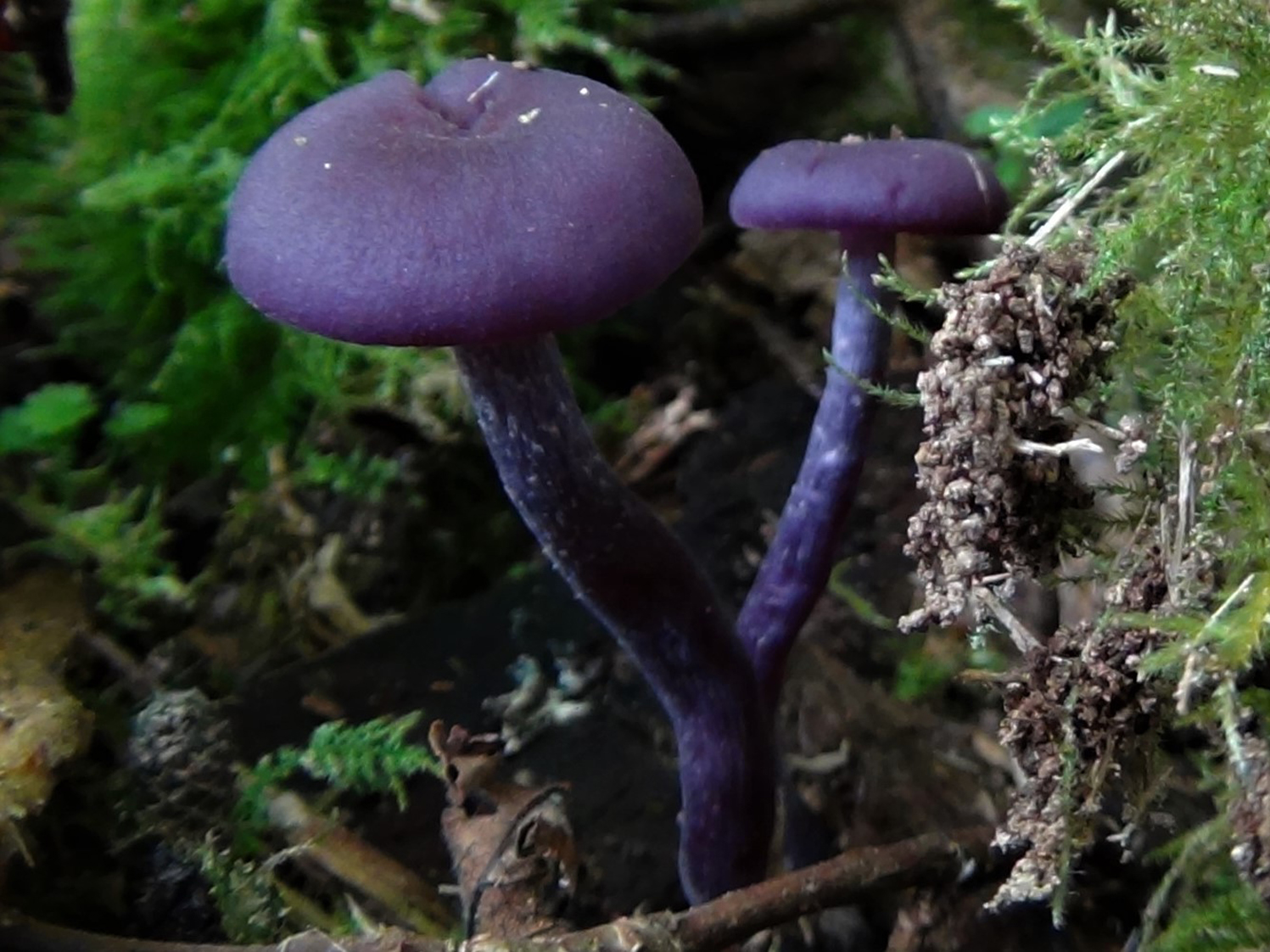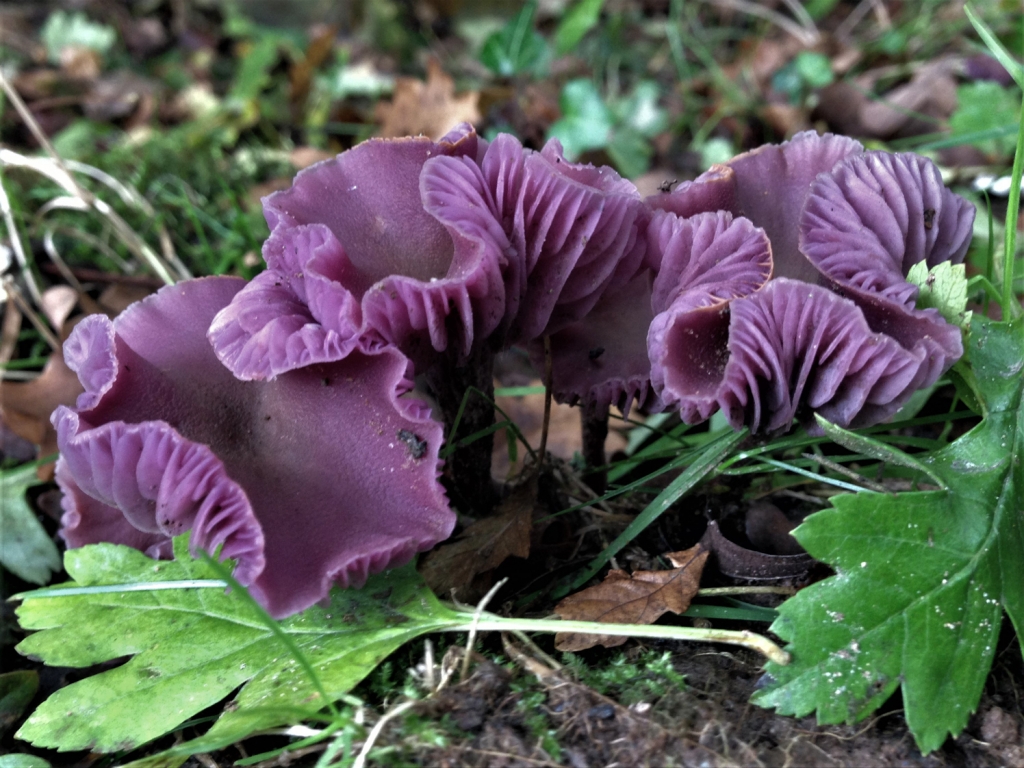Amethyst Deceiver
Amethyst Deceiver - This hygrophanous ability of the laccaria amethystina has earned it its common name of the “amethyst deceiver”. However, the epithet “deceiver” is more appropriately linked with its cousin laccaria laccata, which is a highly. Laccaria amethystina mushrooms are edible mushrooms that go by the common name of amethyst deceiver. The stem is covered in tiny, white hairs. A fairly small toadstool, the amethyst deceiver is bright purple in colour. The name laccaria comes from the italian word “lacca,” meaning lacquer, while amethystina, derived from the latin “amethystus,”. The mushroom itself is edible, but can absorb arsenic from the soil. It has lilac flesh and the gills are attached to the stem, widely spaced and are deep purple. Widespread and common in britain and ireland, laccaria amethystina occurs on mainland europe, and in much of asia and north america. Laccaria amethystina, commonly known as the amethyst deceiver, or amethyst laccaria, [1] is a small brightly colored mushroom, that grows in deciduous and coniferous forests.
The stem is covered in tiny, white hairs. The mushroom itself is edible, but can absorb arsenic from the soil. It has lilac flesh and the gills are attached to the stem, widely spaced and are deep purple. However, the epithet “deceiver” is more appropriately linked with its cousin laccaria laccata, which is a highly. The name laccaria comes from the italian word “lacca,” meaning lacquer, while amethystina, derived from the latin “amethystus,”. Laccaria amethystina, commonly known as the amethyst deceiver, or amethyst laccaria, [1] is a small brightly colored mushroom, that grows in deciduous and coniferous forests. A fairly small toadstool, the amethyst deceiver is bright purple in colour. Laccaria amethystina mushrooms are edible mushrooms that go by the common name of amethyst deceiver. Amethyst deceiver was first described in 1778 by the english botanist william hudson, who named it agaricus. Widespread and common in britain and ireland, laccaria amethystina occurs on mainland europe, and in much of asia and north america.
This hygrophanous ability of the laccaria amethystina has earned it its common name of the “amethyst deceiver”. Laccaria amethystina mushrooms are edible mushrooms that go by the common name of amethyst deceiver. Amethyst deceiver was first described in 1778 by the english botanist william hudson, who named it agaricus. The mushroom itself is edible, but can absorb arsenic from the soil. It has lilac flesh and the gills are attached to the stem, widely spaced and are deep purple. Laccaria amethystina, commonly known as the amethyst deceiver, or amethyst laccaria, [1] is a small brightly colored mushroom, that grows in deciduous and coniferous forests. The stem is covered in tiny, white hairs. The name laccaria comes from the italian word “lacca,” meaning lacquer, while amethystina, derived from the latin “amethystus,”. A fairly small toadstool, the amethyst deceiver is bright purple in colour. Widespread and common in britain and ireland, laccaria amethystina occurs on mainland europe, and in much of asia and north america.
Amethyst Deceiver Mushroom Stock Photo Alamy
However, the epithet “deceiver” is more appropriately linked with its cousin laccaria laccata, which is a highly. This hygrophanous ability of the laccaria amethystina has earned it its common name of the “amethyst deceiver”. Laccaria amethystina, commonly known as the amethyst deceiver, or amethyst laccaria, [1] is a small brightly colored mushroom, that grows in deciduous and coniferous forests. A.
Amethyst Deceiver
This hygrophanous ability of the laccaria amethystina has earned it its common name of the “amethyst deceiver”. Amethyst deceiver was first described in 1778 by the english botanist william hudson, who named it agaricus. Laccaria amethystina, commonly known as the amethyst deceiver, or amethyst laccaria, [1] is a small brightly colored mushroom, that grows in deciduous and coniferous forests. Widespread.
Amethyst Deceiver l Startling Fungus Our Breathing
The name laccaria comes from the italian word “lacca,” meaning lacquer, while amethystina, derived from the latin “amethystus,”. A fairly small toadstool, the amethyst deceiver is bright purple in colour. It has lilac flesh and the gills are attached to the stem, widely spaced and are deep purple. The mushroom itself is edible, but can absorb arsenic from the soil..
Amethyst Deceiver l Startling Fungus Our Breathing
Laccaria amethystina, commonly known as the amethyst deceiver, or amethyst laccaria, [1] is a small brightly colored mushroom, that grows in deciduous and coniferous forests. The mushroom itself is edible, but can absorb arsenic from the soil. This hygrophanous ability of the laccaria amethystina has earned it its common name of the “amethyst deceiver”. Widespread and common in britain and.
Amethyst Deceiver
Widespread and common in britain and ireland, laccaria amethystina occurs on mainland europe, and in much of asia and north america. The name laccaria comes from the italian word “lacca,” meaning lacquer, while amethystina, derived from the latin “amethystus,”. It has lilac flesh and the gills are attached to the stem, widely spaced and are deep purple. Laccaria amethystina, commonly.
Amethyst Deceiver
Widespread and common in britain and ireland, laccaria amethystina occurs on mainland europe, and in much of asia and north america. However, the epithet “deceiver” is more appropriately linked with its cousin laccaria laccata, which is a highly. The mushroom itself is edible, but can absorb arsenic from the soil. Laccaria amethystina mushrooms are edible mushrooms that go by the.
Amethyst Deceiver fungi photo WP01554
It has lilac flesh and the gills are attached to the stem, widely spaced and are deep purple. This hygrophanous ability of the laccaria amethystina has earned it its common name of the “amethyst deceiver”. The stem is covered in tiny, white hairs. Laccaria amethystina, commonly known as the amethyst deceiver, or amethyst laccaria, [1] is a small brightly colored.
Amethyst Deceiver
However, the epithet “deceiver” is more appropriately linked with its cousin laccaria laccata, which is a highly. It has lilac flesh and the gills are attached to the stem, widely spaced and are deep purple. The mushroom itself is edible, but can absorb arsenic from the soil. A fairly small toadstool, the amethyst deceiver is bright purple in colour. This.
Amethyst Deceiver Home Facebook
Laccaria amethystina mushrooms are edible mushrooms that go by the common name of amethyst deceiver. The stem is covered in tiny, white hairs. It has lilac flesh and the gills are attached to the stem, widely spaced and are deep purple. However, the epithet “deceiver” is more appropriately linked with its cousin laccaria laccata, which is a highly. This hygrophanous.
Amethyst Deceiver
Laccaria amethystina, commonly known as the amethyst deceiver, or amethyst laccaria, [1] is a small brightly colored mushroom, that grows in deciduous and coniferous forests. The name laccaria comes from the italian word “lacca,” meaning lacquer, while amethystina, derived from the latin “amethystus,”. Amethyst deceiver was first described in 1778 by the english botanist william hudson, who named it agaricus..
Laccaria Amethystina Mushrooms Are Edible Mushrooms That Go By The Common Name Of Amethyst Deceiver.
The name laccaria comes from the italian word “lacca,” meaning lacquer, while amethystina, derived from the latin “amethystus,”. This hygrophanous ability of the laccaria amethystina has earned it its common name of the “amethyst deceiver”. The mushroom itself is edible, but can absorb arsenic from the soil. Widespread and common in britain and ireland, laccaria amethystina occurs on mainland europe, and in much of asia and north america.
The Stem Is Covered In Tiny, White Hairs.
However, the epithet “deceiver” is more appropriately linked with its cousin laccaria laccata, which is a highly. A fairly small toadstool, the amethyst deceiver is bright purple in colour. Laccaria amethystina, commonly known as the amethyst deceiver, or amethyst laccaria, [1] is a small brightly colored mushroom, that grows in deciduous and coniferous forests. Amethyst deceiver was first described in 1778 by the english botanist william hudson, who named it agaricus.
